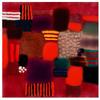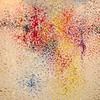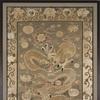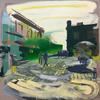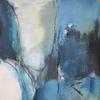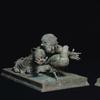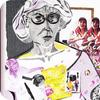Senator Chuck Schumer Visits the ICP Museum to view 'Then They Came for Me: Incarceration of Japanese Americans During World War II'
- NEW YORK, New York
- /
- January 29, 2018
On Friday, January 26th, Senator Chuck Schumer (NY) toured Then They Came for Me: Incarceration of Japanese Americans During World War II—one of the new exhibitions now on view at the International Center of Photography (ICP Museum) in New York.
The show examines a dark episode in US history when, in the name of national security, the government incarcerated 120,000 citizens and legal residents during World War II without due process or other constitutional protections. It features works by renowned photographers Dorothea Lange, Ansel Adams, and others documenting the eviction of Japanese Americans and permanent Japanese residents from their homes as well as their subsequent lives in incarceration camps. Also included are photographs by incarcerated photographer Toyo Miyatake.
The ICP also opened Edmund Clark: The Day the Music Died, the award-winning British photographer’s first solo museum exhibition in the United States. On view January 26 through May 6, 2018 at the ICP Museum (250 Bowery), the show provides a timely and thoughtful exploration of the measures taken by states to protect its citizens from the threat of international terrorism—and the far-reaching effects of such methods of control including issues of security, secrecy, legality, and ethics. It brings together over 100 images, film, official documents, and ephemera exploring the hidden experiences and spaces of control and incarceration in the so-called global War on Terror.
From Guantanamo Bay to Afghanistan to extraordinary rendition and the CIA’s secret prison program, Clark’s work delves into the processes, sites, and experiences associated with America’s response to international terrorism. His engagement with military and state censorship exposes the secrecy and denial around these subjects and reflects on how terror impacts us all by altering fundamental aspects of our society and culture.
Edmund Clark: The Day the Music Died features a linked series of publications and photographic projects completed over more than 10 years. This site-specific exhibition invokes an immersive and sensory engagement with the experiences of observation, detention, and disorientation explored through the artist’s work.
The exhibition includes a new work—198/2000 (2017)—about the disclosure of images of abused torture of prisoners in US detention centers overseas, and the first US showing of Negative Publicity: Artefacts of Extraordinary Rendition (2016), created in collaboration with counterterrorism investigator Crofton Black, which recreates the process of investigating the CIA’s black site network and the corporate service providers that enabled the processes of disappearance within it.
“Everyone’s lives have been hugely affected by the War on Terror,” explains Clark. “We are all living with enormous ramifications with what’s going on. The work isn’t about the individual cases; it’s about the ordinariness of the process and the extraordinariness of the situation. It also concerns looking for new ways for photography and the arts to engage audiences with the unseen and quickly evolving nature of contemporary conflict and the representation of its narratives.”




